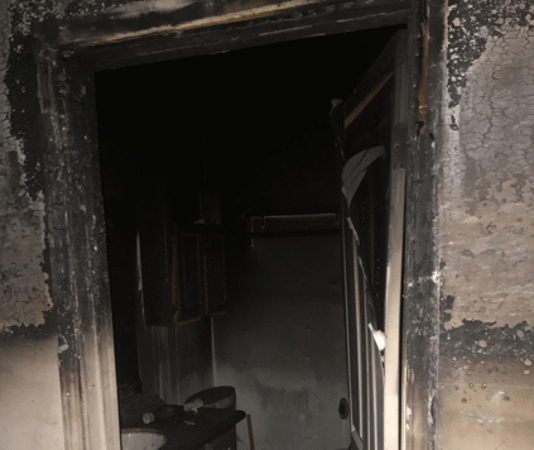
The Science Behind a Smoke-Damaged Santa Rosa Home
We have all heard smoke is bad for us. But only if you’re a smoker, right? After all, you’re putting those carcinogens directly into your body!
Although direct smoke inhalation is unhealthy, so is being surrounded by the damage smoke leaves behind. Have you ever lived in a home with smoke-stained walls, or walked through a home that just experienced a fire? What about a week later? What about sitting around campfires during a routine summer outing?
Any of these scenarios puts you at risk for compromised health and a compromised home.
What Exactly is the Science Behind Smoke Damage?
Smoke is made of a complex mixture of gasses and fine particles produced when wood and other organic materials burn. When inorganic materials such as paint thinners, metals, and biohazards burn, they add a whole other layer of particles that are harmful to health as well as your surroundings. Plants, animals, and structures that come into contact with smoke are at risk for cellular and physical damage.
After any type of fire has finished burning, soot and other fine particles are left behind. Soot is a byproduct of a fire, but instead of a gas, we have to deal with a powdery substance composed of mostly carbon. It can be worse to remove than smoke; it also contains carcinogens, which are cancer-causing substances. Smoke and soot can carry for miles, which means whatever is picked up in that cluster is brought along for the ride. Settling can happen on your rooftops, in your gutters, and even into the furniture in your living room through open windows.
Although it’s instinctual to do so, opening doors and windows to “air out” your home after a fire can only eliminate so much of the strong odors. This act can also increase the spread of smoke and soot to unaffected areas. Any lingering odor and particles hiding in any crevices possible will stay there and continue to cause damage.
What Type of Damage Do We Mean?
Smoke and soot are incredibly acidic and will eat through any surface of your home (probably not very quickly, but any missed areas or prolonged exposure means trouble down the road), including but not limited to wallpaper, drywall, carpet, couches, clothing, paint, porcelain, appliances, and even plastic. Some of these materials will become damaged immediately upon smoke exposure. Pieces of metal can melt away, bits of plastic and porcelain will immediately discolor, and electrical components in your appliances can become compromised.
Smoke distribution is affected by temperature, particle ionization, the surrounding environment, and airflow patterns. Oddly, smoke and soot can sometimes settle in closets, drawers, or behind curtains, even if the fire was nowhere near these areas. This phenomenon is due to the science behind smoke molecules. They spread more rapidly through warmer air; cooler air does not contain the energy needed for further spread. Smoke particles are also ionized, meaning they carry an electrical charge. Often, smoke will attract to parts of a ceiling where nail heads are present, even on the other side of the drywall.
Because the components of a home can be complex, having experts handle every part of your home’s functioning parts can significantly reduce the likelihood of extensive smoke damage. Not only should you be concerned about the air quality of your home due to smoke damage, but the ducting, electrical, plumbing, water quality, and any interior repairs needed should be handled by a professional. West Coast Fire & Water has the knowledge and connections to properly handle any smoke-damaged Santa Rosa home. Contact us at 707-234-4450.

